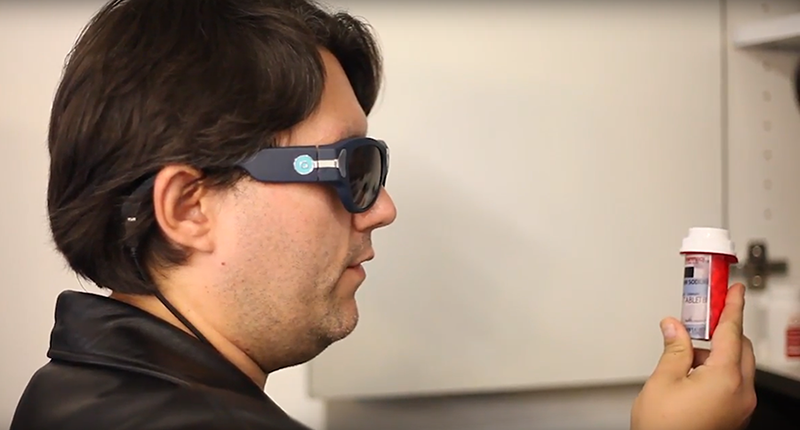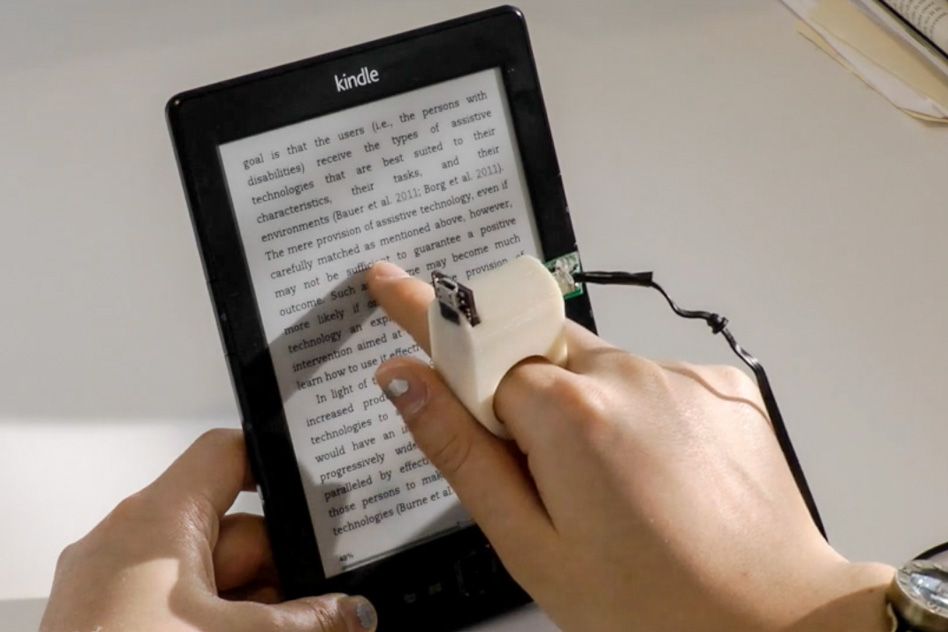Mobility Aids for Visually Impaired Users: Improving Freedom
Mobility Aids for Visually Impaired Users: Improving Freedom
Blog Article
Enhancing Lives With Advanced Assistive Gadgets for the Blind
The assimilation of advanced assistive gadgets for the blind is changing how individuals experience their surroundings and communicate with their neighborhoods. What does this advancement suggest for the future of assistive technology and its role in equipping individuals?
Introduction of Assistive Devices
Assistive tools for the blind incorporate a diverse variety of tools and technologies created to enhance independence and enhance the lifestyle for individuals with aesthetic disabilities. These tools satisfy numerous needs, from navigation and mobility to communication and day-to-day job monitoring.
Among the main groups of assistive gadgets consists of flexibility aids, such as white walking sticks and overview dogs, which help customers browse their environments securely. Digital travel aids, furnished with sensors and audio responses, also play a considerable role in movement improvement.
Additionally, devices that assist with everyday living activities, such as adaptive cooking area tools, Braille tags, and chatting watches, empower individuals to perform tasks independently. Interaction aids, including display visitors and Braille displays, facilitate accessibility to details and allow people to engage effectively with the electronic globe.
Additionally, low-tech services like amplifying glasses and large-print materials remain vital for many users. Collectively, these assistive tools serve not just as sensible tools yet likewise as vital enablers of autonomy, fostering greater engagement in a world that typically prioritizes sighted experiences. Their integration right into everyday life is essential for advertising inclusivity and improving total well-being for those with visual disabilities.
Cutting-edge Technologies being used
Innovation in technology has actually significantly changed the landscape of tools available for people with visual disabilities. Among the most noteworthy advancements are smart glasses incorporated with increased fact, which provide real-time navigation aid and things recognition. These tools leverage progressed video cameras and expert system to supply acoustic signs, improving the individual's spatial awareness and autonomy.
Furthermore, mobile applications have actually emerged as powerful sources, allowing individuals to identify money, reviewed message out loud, and browse strange atmospheres through spoken directions. Tools such as Braille display screens and refreshable Braille tools continue to progress, supplying seamless connection with mobile phones and computer systems, therefore enhancing interaction and access to info.
Wearable innovation, consisting of smartwatches geared up with voice-activated functions, further encourages customers by facilitating fast accessibility to alerts and alerts without requiring visual interaction. Tactile maps and 3D printing are additionally acquiring grip, supplying substantial depictions of areas that help in alignment and mobility training.
Collectively, these ingenious modern technologies not only boost the day-to-days live of visually damaged individuals yet also foster higher freedom, inclusivity, and involvement with the more comprehensive neighborhood, consequently improving understandings of accessibility. (Voice-activated assistive devices)
Individual Stories of Empowerment
Empowerment often emerges from individual experiences that highlight the transformative effect of technology on individuals with aesthetic impairments. Take, for example, the story of Sarah, a young musician that restored her passion for painting through the use of a wise walking cane furnished with obstacle discovery. This device not only facilitated her movement but instilled a newfound confidence, allowing her to browse public spaces separately and pursue her innovative endeavors.

These stories underscore the extensive effects that advanced great post to read assistive devices can carry life. By making it possible for people to overcome obstacles, technology fosters a sense of autonomy and self-respect. Such empowerment stories offer as a testimony to the possibility of advancement, illustrating exactly how the right devices can dramatically enhance high quality of life and open doors to new possibilities for those with visual problems.
Advantages of Advanced Solutions
The combination of sophisticated innovation into assistive devices dramatically changes daily experiences for those impacted by vision loss. AI-powered visual aids. Devices such as smart canes outfitted with sensing units, navigating applications, and wearable modern technology are created to provide real-time feedback, boosting spatial understanding and minimizing the threats associated with movement.
In addition, progressed assistive technologies promote social addition by assisting in communication and communication. Voice-activated tools and apps permit people to access details and involve with their environments individually, breaking barriers that formerly prevented their participation in academic, polycarbonate lenses specialist, and social this hyperlink setups.
In enhancement, the personalization and versatility of these services accommodate the varied demands of customers, thus improving their total lifestyle. Enhanced performance, such as item recognition and text-to-speech abilities, empowers people with aesthetic problems to perform tasks that they may have as soon as found challenging. Inevitably, advanced assistive modern technologies not just enhance self-reliance and safety however additionally promote dignity and self-worth, permitting users to lead satisfying lives.
Future Fads in Assistive Technology
As innovation remains to evolve, the landscape of assistive tools for the blind is poised for amazing developments that will better enhance ease of access and freedom. Emerging patterns in assistive modern technology suggest a change toward raised integration of expert system (AI) and artificial intelligence, making it possible for tools to adjust to individual user needs in real-time. These advancements are expected to promote even more intuitive navigating systems that can identify obstacles and offer audio comments, considerably enhancing exterior wheelchair.
Furthermore, the growth of wearable technology, such as smart glasses equipped with augmented fact, will certainly permit customers to get contextual information concerning their environments, thereby improving their spatial understanding. Advancements in haptic innovation pledge to create tactile feedback tools, permitting customers to regard details with touch, boosting learning and communication with their environment.
Telecommunication advances are likewise leading the means for remote support solutions, where experienced experts can give support by means of video clip phone calls, guaranteeing support is readily obtainable. As these trends unravel, the future of assistive tools for the blind will unquestionably cultivate greater freedom, encouraging people to navigate their world with confidence and simplicity.

Final Thought
The assimilation of advanced assistive gadgets for the blind stands for a considerable improvement in cultivating self-reliance and boosting top quality of life. By making use of innovative technologies, these devices empower customers to navigate their atmospheres with greater self-confidence and freedom. As the area proceeds to evolve, continuous research study and advancement will likely produce also extra sophisticated remedies, further transforming the lived experiences of individuals with aesthetic problems and advertising a better sense of incorporation within society.
The assimilation of sophisticated assistive gadgets for the blind is changing how people experience their surroundings and connect with their areas. The combination of sophisticated technology into assistive devices considerably transforms daily experiences for those affected by vision loss.As innovation proceeds to progress, the landscape of assistive tools for the blind is poised for remarkable advancements that will better boost ease of access and self-reliance. Emerging fads in assistive innovation indicate a change toward raised combination of synthetic intelligence (AI) and equipment learning, allowing tools to adapt to individual customer needs in real-time.The integration of innovative assistive devices for the blind stands for a substantial innovation in cultivating independence and enhancing high quality of life.
Report this page